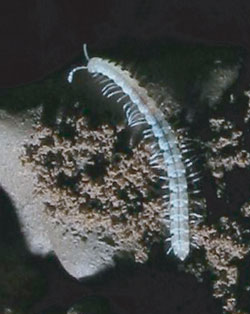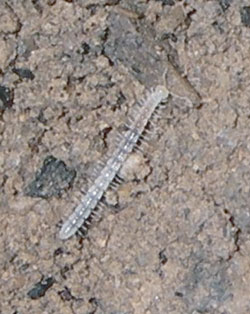Two new species of eyeless albino millipede found in Arizona
Two new species of eyeless albino millipede found in Arizona
mongabay.com
March 5, 2007
A newly discovered genus of millipede may shed light on the poorly understood cave ecosystems of the desert southwest.
J. Judson Wynne, with the Department of Biological Sciences at Northern Arizona University (NAU) and cave research scientist with the U.S. Geological Survey’s Southwest Biological Center, and Kyle Voyles, Arizona State Cave Coordinator for the Bureau of Land Management (BLM), collected the two previously unknown millipede species in caves on opposite sides of the Grand Canyon.
“We knew the millipedes likely represented two distinct species because the two populations were separated by the Grand Canyon,” Wynne said. “The fact these two species belong to an entirely new genus was a great surprise to us.”
Wynne called the eyeless albino millipedes “essentially living fossils” and said they provide “another piece of the puzzle needed to better understand cave ecosystems,” in a statement from Northern Arizona University.
 |
 |
|
| The north rim (left) and south rim (right) species of the new millipede genus. While they may appear identical by the photos, careful examination of the gonopods indicates these are two distinct species. Photos courtesy of D. Billings and the Bureau of Land Management. | ||
“During the last Ice Age, when northern Arizona was warmer and wetter, millipedes lived in leaf litter,” explained the statement from NAU. “As the climate warmed, they sought refuge in caves, where the subterranean realm provides more constant climatic conditions enabling their survival.”
“Caves are extreme habitats that have received far too little attention. The arthropods that can survive these dark and resource-poor environments can tell us a lot about what makes them so successful as a group,” added Neil Cobb, curator of the Colorado Plateau Museum of Arthropod Biodiversity in the Department of Biological Sciences at NAU.
According to Northern Arizona University, research by Wynne and Voyles has yielded the discovery of at least 10 new species in northern Arizona, including a new species of spider, possibly two new cricket species, a new barklouse species, a new beetle species, and possibly two new springtail species.